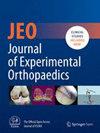Preoperative activity, postoperative flexion contractures, and degree of medial cartilage damage affects achievement of high physical activity after open wedge high tibial osteotomy
Abstract
Purpose
To investigate factors that affect return to physical activities after open wedge high tibial osteotomy (OWHTO), and to determine whether an optimal correction angle exists for return to physical activities.
Methods
Patients with medial osteoarthritis of the knee who underwent OWHTO at our institution were evaluated. Radiographic evaluations were performed using bilateral weight bearing long leg radiographs. The clinical evaluation consisted of the Tegner activity scale, the Knee Injury and Osteoarthritis Outcome Score (KOOS) Sports/Rec subscore, and the presence of residual flexion contracture of 10° or more in unstable hinge fractures. In addition, the degree of cartilage damage in the medial compartment was evaluated via arthroscopic surgical findings according to the ICRS classification.
Results
Sixty patients (70 knees; 25 males and 45 females; mean age, 55.2 [32–75] years; mean follow-up, 8.5 [3.8–12.4] years) were included in the study. The preoperative alignment defined by mean WBLR (%) was significantly higher in the Return to High Physical Activity Group (H Group: 31.0 ± 18.6) than the Return to Low Physical Activity Group (L Group: 15.9 ± 13.9). Logistic analysis showed that low preoperative WBLR and the absence of severe cartilage damage to the medial compartment, postoperative flexion contracture, and unstable hinge fracture were factors affecting return to sport. In addition, the cutoff values using the Youden Index based on ROC analysis were preoperative Tegner activity score of 4.0 and preoperative KOOS (Sports/Rec) of 35.0.
Conclusion
Preoperative KOOS (Sports/Rec) was a useful index for predicting postoperative return to high physical activities. Depending on the degree of arthroscopic cartilage damage, the under-collection of cases with severe cartilage damage should be avoided.
Level of Evidence
Level IV, retrospective case series.




 求助内容:
求助内容: 应助结果提醒方式:
应助结果提醒方式:


